All round success and a genuine recommendation for all those who expect a high value for money for scarcely 300 euros. The Bowers & Wilkins PX5 are on-ear headphones at the highest technical level, which is right at the top when it comes to sound. The Bowers & Wilkins PX5 shows their strengths both as travel headphones, and as a constant companion in everyday urban life between open-plan offices, underground trains and cafés.
Bowers & Wilkins is one manufacturer who would never be forgiven for making mistakes as, over several decades, this British brand has earned such a good reputation. As expected, trying out these 254-gram versions of the PX5 didn’t bring any special surprises – except for one little thing, but more on that later.

The Bowers & Wilkins PX5 come in their usual elegant box. In the slipcase, there’s a grey cloth case with reinforced lids and rubber loops next to the headphones themselves. The PX5 in blue is not as delicate as its predecessors but still catches the eye. The headband, made of carbon fibre composite, not only feels good, but it is also very easy to adjust the size smoothly. The hinges and fixing of both ear cups have a solid appearance. The coarsely woven outer fabric, grey or blue depending on the model, is attractive. Where the cups make contact with your ear and head, the soft faux leather is pleasantly comfortable.
Technology that excites
Bowers & Wilkins have packed everything into the PX5 that is technically possible within the recommended price of 299 EUR. Features like Bluetooth version 5.0 with the popular aptX Adaptive, Classic and HD codecs are the kind of things that make hi-fi purists think about buying a wireless headset in the first place. There is ANC, an Ambient-Hear-Through function, USB-C is integrated and the PX5 can handle audio streams from a computer via universal bus. A 3.5 mm input also provides the PX5 with analogy access.
This list of technical features can be done by others too, but their handling and refinement are often issued. For both to be successful you need engineering power, which you feel as soon as you use the PX5.
Handling of technology
Bluetooth is the main communication channel. Not only is this for playing music, but also for linking the headphones with the Bowers & Wilkins App. If, like me, you assumed that the app you needed to install is called “B&W PX”, you will not be able to connect the PX5 to your Smartphone. This caused me a bit of confusion in the first few minutes, but after an enquiry to the agency that sent the device for the test, it was clarified that this was one of the surprises mentioned at the beginning. The app called “Bowers & Wilkins Headphones” would have been the right one.
The battery, which is about half charged at delivery, allows immediate testing even without app support: The Bluetooth pairing happened within a few seconds without problems with iOS, Android version 9 and macOS. Thanks to the 5.0 standard, the PX5 remembers up to 8 connections and establishes them without being asked, whenever the Bluetooth partner device is within range.
Automatic listening
Up to two connections can be operated in parallel. And since the B&W PX5 has sensors that reliably detect the degree of use, there is practically no need to think about the operation. Thanks to its sensors, in fact, the Bowers & Wilkins PX5 is a very nice bit of kit. As soon as you put it on and get it out of standby mode, a voice message informs you that it is connected to the last active Bluetooth device or devices. So only in the rarest of cases will you have to go to the Bluetooth menu of a Smartphone or other device. If the headphones are only briefly removed, it not only interrupts playback, but also sends a pause command back to the player, so that music starts again after reconnecting, which is very convenient.
It’s also very practical if you’re sitting at the computer, listening to music, browsing through pages. You can watch a video ‘here’ and listen to a podcast ‘there’. On the phone – in the case of this test my iPhone – a conversation comes in, and immediately the PX5 stops the music and you can accept the call by pressing the button on the right earpiece once. When the conversation is over, the music continues from the point where you were interrupted. This is a wonderful feature, especially for listening to podcasts.
Noise cancelling
First, the PX5 provides sufficient shielding at normal ambient noise levels. As a pedestrian in the city, ANC should remain deactivated. This way, honking horns, squealing tires or moody road users of any kind can be detected, at least acoustically. If you want to put the sound from the outside on the headphones for a short time, you need to press the ANC button on the left twice. You can set how much sound is transmitted using “environmental switching” in the app.
B&W also offers three NC modes: With “Low”, the PX5 offers a slight noise reduction that works well in open-plan offices, bus shelters or train stations. You can withdraw without totally isolating yourself acoustically. “High” is the right choice if you’re in an aircraft, for example. In this setting, so little gets to the ear that even the famous frequent flyer sleep, i.e. slumbering without music, can be successful. Earplugs are so last week! Impressively, the “Auto” setting reduces very diffuse and almost imperceptibly disturbing noises without making you feel totally isolated from the world.
The noise-cancelling features not only work very effectively, but they also do not change the sound – no matter in which mode. Another plus point: ANC does not add any noticeable noise, and not all competitors can do that.
Sound
In addition to the barely noticeable change in sound when noise cancelling is switched on in Bluetooth mode, the Bowers & Wilkins PX5 also demonstrates when listening to our Spotify playlist that the utmost care was taken when tuning. The Bowers & Wilkins PX5 reproduces bass accentuated electronic genres as well as acoustic recordings in a very nuanced way. When using the aptX HD codec with an Android Smartphone and high-definition audio, the PX5 shows what it’s made of. Diana Krall’s track “Superstar”, played in parallel both as Spotify stream via iPhone and as 24/96 FLAC via the VLC player using the HD codec, showed a noticeable improvement to what was already an enjoyable listening experience on a Nokia 7.1 with Android One. The fine strings and the characteristic voice were reproduced with even more nuance in the HiRes version.
Heard via cable, the HiRes material revealed a similar picture, although its sound changes quite a bit in contrast to pure wireless operation. Without ANC, it has its peak at 300 Hz and drops continuously downwards, while with active noise reduction it provides a rounder bass range. Nevertheless, electronic music was always reproduced smoothly, especially with energetic bass sounds; no drumming and fluttering of bass lines, no aching hissing sounds in higher regions – everything was reproduced in as much detail as possible. All in all, the PX5 gets the full score for sound from me.
The PX5 in practice
I wore the PX5 for a week in a variety of situations. At work in the office – including during Skype calls – when audio editing and while watching videos. Two devices were always connected. My iPhone as telephone and as a travel audio player, as well as an iMac as my work computer. At home, there were some listening sessions with the aptX-HD-enabled Nokia Smartphone. I never felt I had to worry too much about the technology as the PX5 was always ready. I recharged the PX5 twice during the one-week test period. Once on the first day and a second time rather casually during operation via USB, because I used the PX5 as the USB audio device for audio editing.
I never measure the battery life with a stopwatch but I never had the feeling that the charge level of the battery would adversely affect my life. The PX5 would have probably also have survived a long distance flight and return journey. I get the impression that the 25 hours of operation with ANC is a fair assumption of the running time. Within 15 minutes of quick charge the headphones manage to run for another 5 hours – also an excellent virtue!
By the way, the app is not really needed. You can check the battery status, see which Bluetooth connections are currently active, there is a user manual in PDF format and you can also find support pages. The supplied 1 m audio cable with stereo jacks should possibly be replaced with a longer one. However, it does reach from the armrests to the headphones to allow you to enjoy the onboard entertainment on the plane.
Technical specifications
- Ear couplingOn-ear
- Typeclosed
- Transducer principledynamic
- Frequency response (headphones)10 - 30.000 Hz
- Impedance20 ohms
- Weight without cable241 g
- Cable length100 cm
What's in the box
- Mini jack cable
- USB-A to USB-C cable
- Travel case
Special features
- Available in Grey and Blue
- BT codecs: aptX Adaptive, aptX HD, aptX Classic, AAC, SBC
- BT version: 5.0
- BT profiles: A2DP v1.3.1, AVRCP v1.6.1, HFP v1.7.1, HSP v1.2, BLE GATT (Generic Attribute Profiles)









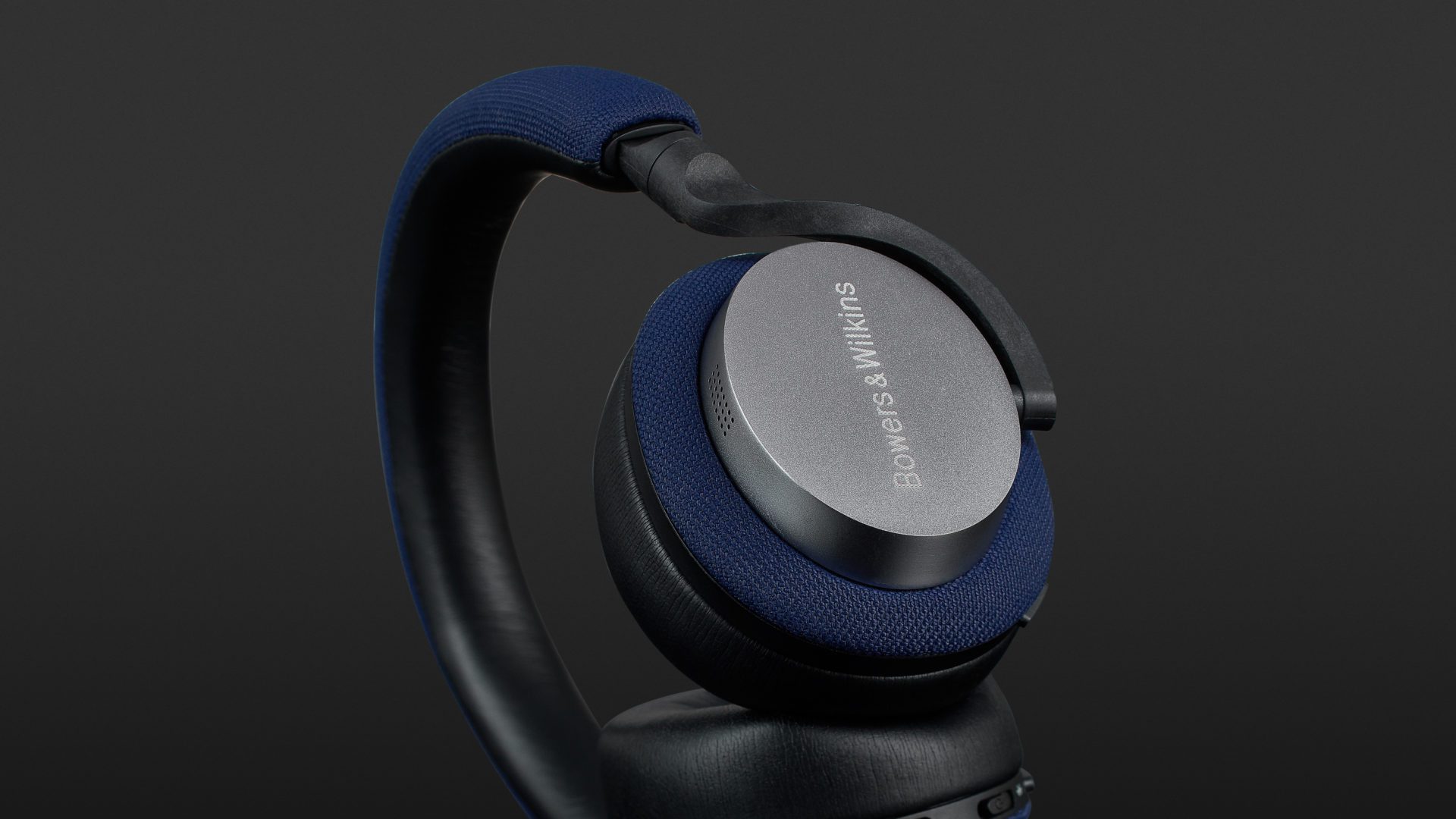


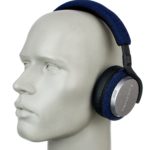
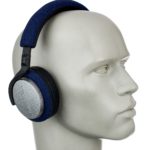
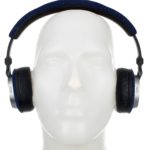

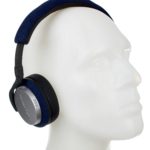





































Hi, just wanted to let you know, the ear cups are made from “synthetic high tech polymer specially designed to meet our stringent acoustic & wear requirements.” I wrote them, asking what is the material because I couldn’t find anything on their site and this is what they said. I’m glad they made the change.